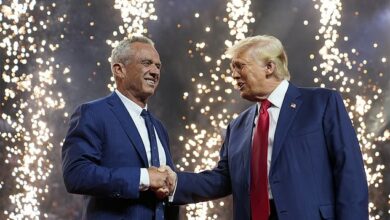Toyota Tundra Announced for Australian Debut

Another giant American ‘pickup truck’ is coming to Australia: Toyota is launching the Tundra Down Under in November, despite growing criticism of such massive pickups.
The Tundra, which is expected to cost around $150,000, follows in the footsteps of other behemoths such as the RAM 1500, Chevrolet Silverado 1500 and Ford F-150, which have become hugely popular with Australian drivers.
While many are excited about the Tundra’s launch, there are also major concerns about such large vehicles. They increase blind spots and limit visibility for other drivers, they are harder to maneuver on side streets, and they don’t fit in narrow lanes or parking spaces.
Carla Hoorweg, head of the Australasian New Car Assessment Program, said the organisation had received “many concerns from the community” about the mega-utes.
“We’re looking at vehicles that are designed for the U.S. market. They’re not necessarily going to be focused on protecting pedestrians or vulnerable road users. That’s not a focus in that regulation,” she said. autogids.com.au.
“So we know there will be a gap.”

The domestic launch of the Tundra (pictured), which will compete with the RAM 1500, Chevrolet Silverado 1500 and Ford F-150, has been six years in the making

American pickup trucks (such as the privately imported Ford F-350 pictured above) are becoming increasingly popular across Australia
Ms Hoorweg said that unlike Australia, the US has no specific regulations for protecting pedestrians in a crash.
As a result, many of these vehicles do not comply with Australian design regulations.
“We are currently considering what options there are for physical testing, so there is a possibility for a pedestrian impact test,” she said.
But full crash tests with these pick-ups are not yet possible for ANCAP, as millions of dollars are needed to purchase the five vehicles of each model needed to carry out the tests.
Russell White, CEO of the Australian Road Safety Foundation, warned that American pickups have a larger blind spot.
“The larger these types of vehicles are, the more likely it is that the blind spots will be so large that vulnerable road users can’t see into them, so things like front-facing cameras should definitely be part of the overall safety,” White said.
‘Just as we’ve seen with reversing cameras, this is a tool that provides a driver with the information they need to control the vehicle.
‘As they become more popular and there are more of them, there could be more accidents on the road unless steps are taken to assess their safety rating and evolve them over time.’
Victorian Greens leader Samantha Ratnam said Australia’s highways were not designed for trucks and argued that owners should be forced to pay higher registration and parking fees.

Victorian Greens leader Samantha Ratnam said Australia’s highways were not designed to accommodate monster trucks
“It is an undeniable fact that super-sized vehicles are dangerous. They have blind spots up to four metres in front of the vehicle,” Ms Ratnam said.
‘It is therefore no coincidence that the chance of a child dying in a larger commercial vehicle is eight times greater than the chance of a child dying in a lighter car.
‘And we haven’t even talked about the enormous amount of pollution these animals cause.
“Large pickup trucks play a role in regional areas, but these luxury vehicles — often costing more than $100,000 — have significantly higher emissions and are more dangerous to pedestrians and cyclists than regular passenger cars,” she wrote on Instagram.
Meanwhile, in the US, the National Highway Traffic Safety Administration has announced plans to crack down on large pickup trucks, SUVs and vans after the number of fatal pedestrian crashes rose by as much as 57 percent between 2013 and 2022.
Many Australians are also calling for an outright ban on American pickup trucks.
“I always get the shivers when I see Australians driving these American-designed, offset trucks,” said one.
“These vehicles make me irrationally angry. I can’t imagine what kind of person buys these,” added another.
“They’re no better than more reasonable tradies. They’re totally impractical. They’re giving the planet the finger. I hate them so much.”
Pickup truck owners are regularly criticized for taking up multiple parking spaces.
“This is not about utility, just about aggressively lecturing everyone,” wrote one commenter.
“If you don’t really need that (pickup truck) you’re just making life worse for the people driving around you and parked next to you,” said another.
“Don’t let the unnecessarily large car vanity culture from the US take over here, just like tipping tries to do.”
Despite all the outrage, demand for such vehicles is high enough for Toyota to conquer the Australian market with the Tundra.
The pickups are made in the US state of Indiana and leave the factory there with left-hand drive, before being converted to a right-hand drive vehicle using parts from the LandCruiser 300 Series.
Toyota Tundras are much bigger, more powerful and much more expensive than Australia’s most popular pickup, the Hilux.

The domestic launch of the Tundra (pictured) will compete with the RAM 1500, Chevrolet Silverado 1500 and Ford F-150

Standard equipment includes leatherette upholstery, heated and ventilated front seats, dual-zone ventilation, wireless phone charging and a 12-speaker JBL sound system (pictured)
Tundras are up to 6.2 m long, up to 80 cm longer than a Hilux and up to 30 cm taller at 2 m.
While converting right-hand drive cars to left-hand drive cars is fairly common in the aftermarket, Toyota has never before approved such a project where the car could be sold from a dealership with a full factory warranty.
“This announcement marks the first time – in fact anywhere in the world – that we at Toyota have exported a vehicle built in a country other than Japan to a third country, redesigned it with a local partner, completed final assembly in a non-Toyota plant and sold it as a 100 percent Toyota-branded vehicle,” said Sean Hanley, Toyota vice president of sales, marketing and franchise operations.

The Tundra (top) trumps the Toyota HiLux (bottom) in size, with the new pick-up measuring 5,933mm long and 2,037mm wide, compared to the classic chassis which is just 5,265mm long and 1,800mm wide.
“It confirms that the right-hand drive Tundra meets Toyota’s global standards for equality, durability and reliability.”
The Tundra will initially be available in Australia with a 3.5-litre twin-turbocharged V6 hybrid powertrain producing a combined 326kW/790Nm.
Standard equipment includes leatherette upholstery, heated and ventilated front seats, dual-zone ventilation, wireless phone charging and a 12-speaker JBL sound system.
There’s also a 12.3-inch (31 cm) digital instrument cluster and a 14-inch (35 cm) screen with Android Auto and wireless Apple CarPlay.
And next year there will be a new, more luxurious model with higher specifications.
“It will appeal to buyers looking for a large pickup truck with luxurious comfort,” Mr. Hanley said.




